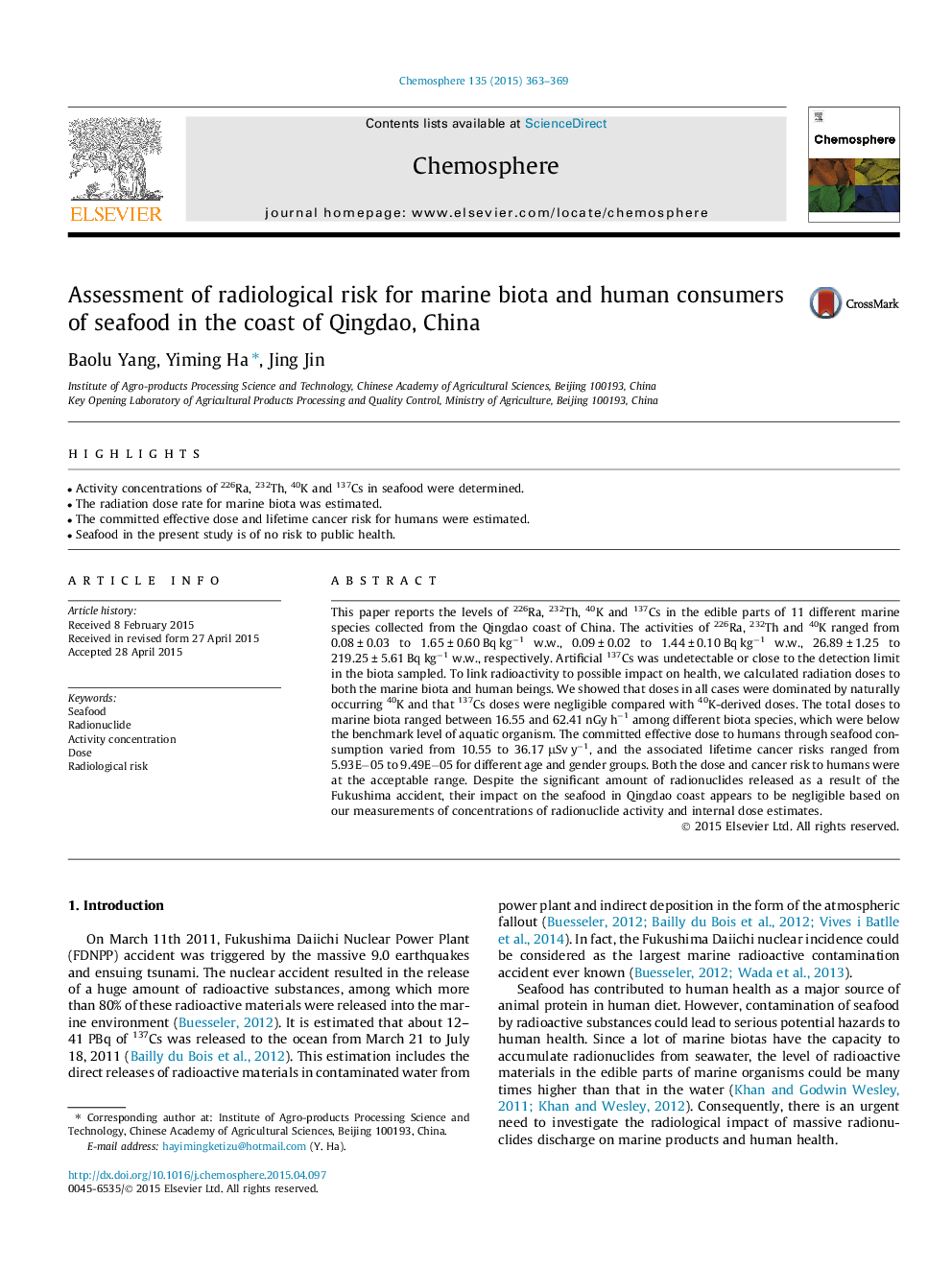| Article ID | Journal | Published Year | Pages | File Type |
|---|---|---|---|---|
| 6307888 | Chemosphere | 2015 | 7 Pages |
Abstract
This paper reports the levels of 226Ra, 232Th, 40K and 137Cs in the edible parts of 11 different marine species collected from the Qingdao coast of China. The activities of 226Ra, 232Th and 40K ranged from 0.08 ± 0.03 to 1.65 ± 0.60 Bq kgâ1 w.w., 0.09 ± 0.02 to 1.44 ± 0.10 Bq kgâ1 w.w., 26.89 ± 1.25 to 219.25 ± 5.61 Bq kgâ1 w.w., respectively. Artificial 137Cs was undetectable or close to the detection limit in the biota sampled. To link radioactivity to possible impact on health, we calculated radiation doses to both the marine biota and human beings. We showed that doses in all cases were dominated by naturally occurring 40K and that 137Cs doses were negligible compared with 40K-derived doses. The total doses to marine biota ranged between 16.55 and 62.41 nGy hâ1 among different biota species, which were below the benchmark level of aquatic organism. The committed effective dose to humans through seafood consumption varied from 10.55 to 36.17 μSv yâ1, and the associated lifetime cancer risks ranged from 5.93Eâ05 to 9.49Eâ05 for different age and gender groups. Both the dose and cancer risk to humans were at the acceptable range. Despite the significant amount of radionuclides released as a result of the Fukushima accident, their impact on the seafood in Qingdao coast appears to be negligible based on our measurements of concentrations of radionuclide activity and internal dose estimates.
Related Topics
Life Sciences
Environmental Science
Environmental Chemistry
Authors
Baolu Yang, Yiming Ha, Jing Jin,
